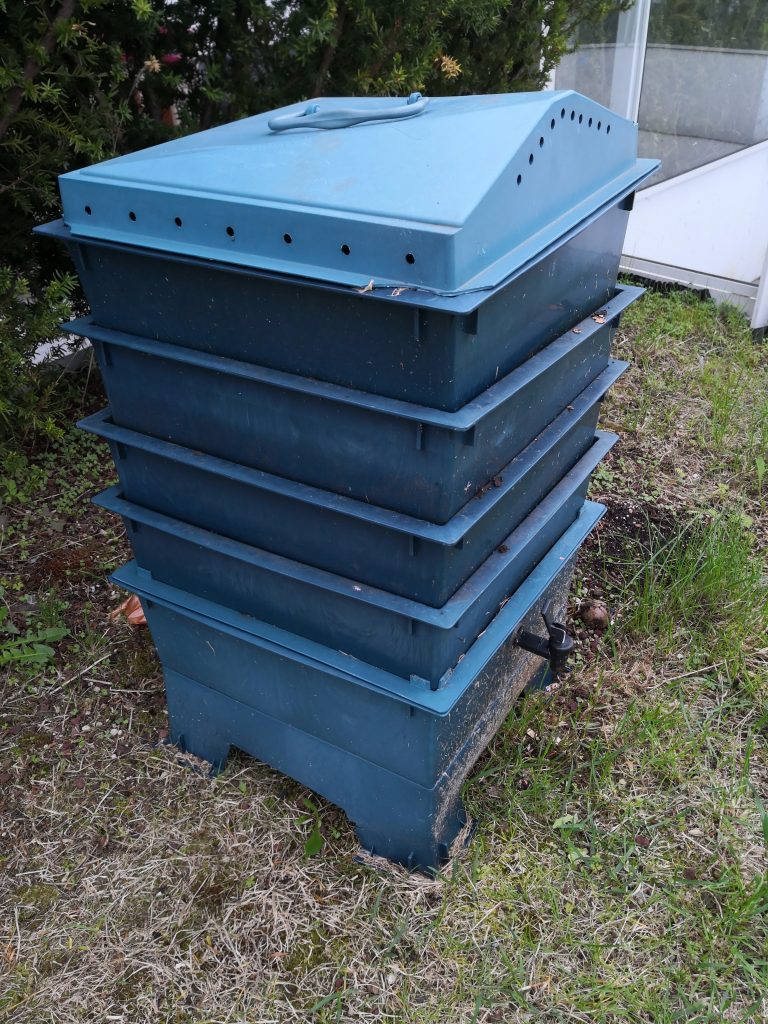As I mentioned previously the soil in the planters that we use is less than ideal. We’ve taken to amending it with purchased compost and manure each spring, which has had a noticeable effect on production. While purchasing soil amendments is fine, we’ve also set up a worm composter on the roof to provide additional, free nutrients to the soil.
First, we don’t have the smaller, apartment worm composter that is provided by the city following their composting courses. We’re currently using the Worm Factory 360 Composting Worm Bin which we were lucky to pick up on Craigslist. This bin has 4 separate trays that stack one inside the other which lets you build your compost in stages, and makes separating the worms out easier. Additionally, there is a final, lower tray used to catch the compost tea, and a spigot to let you drain it when desired.
Using the Worm Factory 360 (If you’re from Canada, here’s a local Worm Factory 360 link) has come with learnings that I will share here.
- Keep the compost bin in a somewhat sheltered location. The trays aren’t sealed, and water hitting from the side will get into the trays. We live in Vancouver, and it rains A LOT. To prevent the trays getting too wet, we’ve positioned out bin where it is open from above to allow some moisture to hit the composter, but where it is protected from the sides.
- Keep the composter’s spigot open. I know, this robs us of the compost tea, but we’re not diligent enough to keep it drained enough to avoid the lower tray from getting soaked. If you’re checking on the bin daily, then maybe closing the spigot is fine, but otherwise consider keeping it open. It also helps that our bin is on a grassed area, so the tea doesn’t cause any mess.
- Do not compost large pieces of bread, and any meats/cheeses. We don’t have rodent pests on the roof, so the typical rodent risk related to meat/cheese isn’t an issue. That said, we do like to avoid smells, and further we’ve found that any dense break/cake etc tends to not break down and instead just mold.
- Rotate the compost trays. We keep the trays with the freshest material in the bottom, and the oldest/most ‘ready’ tray at the top. I’ve found that the worms in that top tray, once they’ve finished the available organic matter start to migrate down to lower, more nutritious trays, making worm extraction much easier.

So far we’ve made due with a single Worm Factory 360 Composting Worm Bin but given interest from others in the building, we’ll be looking at purchasing additional, or some other, larger bin to accommodate the available vegetable waste. At this point I’m thinking about either a tumbler / rolling composter, or one of the more pleasantly designed aerobins like the ones on offer at Amazon.

